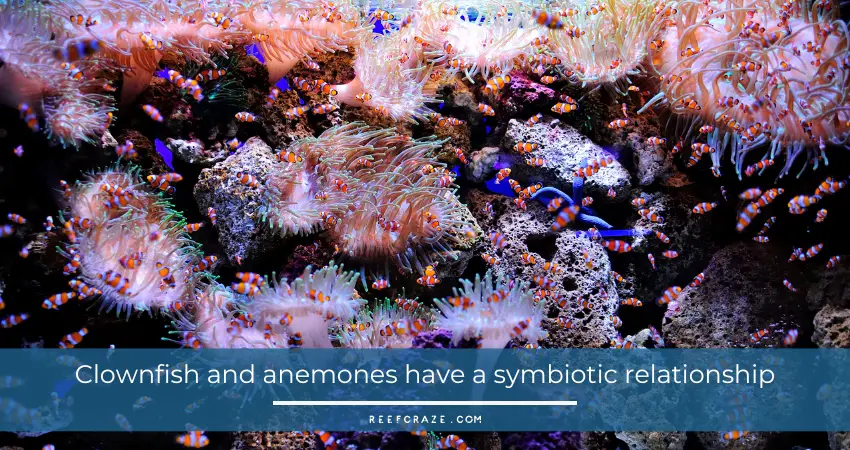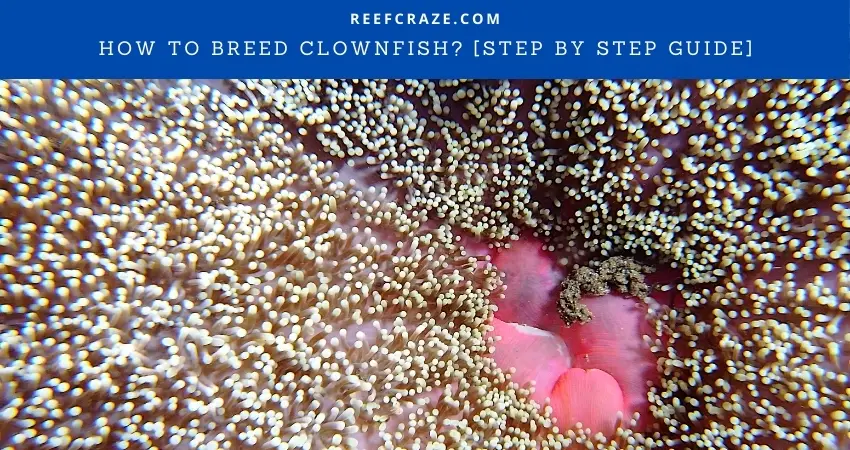The little fish Nemo that stole our heart in the animated movie Finding Nemo is as adorable as it was in the film. Many people got so fascinated by this lovely orange clownfish that they started to have clownfish as pets. And then, they start wondering how to breed clownfish.
To breed clownfish, the first thing you need to ensure is setting up the right tank environment. Then you will need a suitable pair of clownfish for mating. Once the female clownfish lay eggs, the male ones will protect the eggs. You need to move the eggs to a small hatching tank, and the clownfish fry will appear soon.
In the following part of this article, you will find more detailed information on breeding clownfish. I have provided step-by-step guidelines to help you out.
How To Breed Clownfish?
For your convenience, I’ve divided all the information into two parts. In the first part, you will learn to pair the clownfish and track their behavior. The other part will explain how to take care of the clownfish fry.
Part One: Preparation For Breeding
It is the basic part of understanding how to prepare your tank for breeding clownfish. Besides, you need to make sure you find the right pair.
Step 1: Aquarium Knowledge
Breeding clownfish is not challenging. However, you need to have adequate knowledge regarding saltwater or marine reef aquarium maintenance.
So it is best if you understand the life and feeding cycles. It is also essential to keep the tank environment as natural as possible.
Step 2: Get A Matched Pair
The clownfish pair is somehow pretty unique. They are external breeders because the female clownfish lay eggs, the male ones fertilize and protect them.
That’s why you need to find a pair that has a good bond. It is a bit challenging, but you can ask the shop assistant to help you find the perfect pair. Some stores keep bonded or mated clownfish separately.
Step 3: Develop A Mated Pair
What to do if you cannot find a mating pair in the stores? The answer is simple: you develop a mated clownfish pair. But here are a few things you need to learn regarding clownfish gender and pairing.
- All clownfish are born sexless. It means they do not have any specific gender when they are born. The sex develops as they start to grow.
- That’s why you can purchase two young clownfish that still haven’t developed any gender. When you keep them together, the dominant one will become a female, and the less dominant one will be male.
- If you have multiple clownfish in a tank, you will get only one pair to develop a mating bond. The most dominant clownfish will be female, and the second dominant one will be male. The other clownfish in the tank will remain sexless for the rest of their lives.
- If you want the bonding to happen quickly, you can place two young fish in the tank, having one a little larger than the other. The large one will be dominant and a female.
Step 4: Keep The Tank Clean
Clownfish are not as sensitive to water conditions as many other reef tank fish. However, giving them a safe and clean tank environment will help them breed. That’s why you need to keep the tank and tank water clean.
Step 5: Placing Anemone In The Tank
You do not need to set up a lot of things in a clownfish tank. So, placing an anemone is not mandatory. However, it can make the clownfish more comfortable and encourage breeding.

You can place live rocks in the tank. This type of rock develops coral reefs. As a result, they will bring a more natural vibe to the tank and provide the fish with a hiding and resting place.
Step 6: Adequate Tank Light
It will be best if you provide the fish with minimum light and darkness throughout the day. Use a fixed schedule to ensure the tank receives light during the day and stays dark at night. It will help keep the fish more relaxed and increase the chance of breeding.
Step 7: Tracking Clownfish Behavior
You will notice the male clownfish chasing, biting, or nibbling at the female one to draw her attention. It is a sign that the fish want to mate.
Step 8: Signs Of Spawning
As the time to lay the egg gets closer, the female clownfish will start getting thicker in the middle. Then the pair will begin cleaning the rock area with their mouth and fin. It indicates that they are ready to have eggs.
Step 9: Recognizing The Eggs
Spotting the eggs will not be difficult as there will be a lot of them. You will find them on the rock they have cleaned.
Clownfish eggs are about 6-7 mm long and will be orange-ish in color. The male fish will protect the egg and take care of them through aeration. He will pick out the dead eggs and keep the others clean.
Step 10: Track Change Of Eggs
The eggs will develop through various stages. The color will be orange at first. But soon, it will start changing. It will take about 7 to 10 days for the eggs to hatch.
The clownfish fry or babies eat live food. You can provide them with live rotifers, which many species eat. You can carry on feeding them like this for a week and then move to live brine shrimp.
Step 11: Set Up A Hatching Tank
Once these eggs develop, you need to start setting up a hatching tank for the clownfish fry. You don’t need a large tank for that. A 10-gallon fish tank will be enough for hatching.
Another essential thing to keep in mind is to not install a strong filtration for the hatching tank. If the water flow is too strong, it can kill the fry.
The hatching tank needs sufficient light. Newborn clownfish fry do not have a strong vision. So they need light to find their food. Just make sure the light is not too bright for them.

Part Two: Raising Clownfish Fry
Learning how to breed clownfish comes with the process of raising clownfish fry or babies. You need to take good care of them to make sure they grow healthy and happy.
Step 1: Move The Hatchlings To The Tank
Clownfish, like many other fish, are notorious for eating their eggs and hatchlings. So you have to be prepared ahead of time and set up a separate tank for the hatchlings.
Many people remove the eggs from the main fish tank and place them in the hatching tank. However, others wait for the hatchlings to come out first. In that way, moving them becomes a lot easier.
Step 2: Feed The Hatchlings
The clownfish hatchlings will need food as soon as they start developing from the eggs. The food you give them will have to change as they begin to grow.
- In the beginning, you can feed them with rotifers. These are microscopic aquatic animals and are suitable for hatchlings. You can purchase them from any fish store.
- If the stores don’t have the rotifers, you can buy eggs to hatch them at home. Many fish breeders choose the second option.
- Ensure a steady supply of rotifers before the eggs start hatching. You will need them immediately. Without enough food, the hatchlings can die.
- And once 7-10 days pass, you can start feeding them with small brine shrimps. They may look tiny, but they are full of nutrition.
Step 3: Change Water Daily
This is another essential part of breeding clownfish. The hatchlings need clean and healthy water to grow. Besides, they will not see the food clearly if the tank water is dirty or cloudy.
So, you must change at least 25%-50% water daily. Keeping the water quality high will keep the hatchlings growing healthy. Otherwise, they will start to die.
Step 4: The Survivors
Your clownfish can lay hundreds or thousands of eggs. But many of them will not survive till the end. Some do not hatch at all, while the others die or get eaten along the way. That’s how clownfish breeding works.
Make sure you are feeding them regularly and providing enough nutrition. And if you notice mass death among clownfish fry overnight, check your tank water parameter and find the precise reason behind it.
Step 5: Enjoy Your Clownfish Breeding Result
Soon, you will start seeing the hatchlings growing and changing color like grown clownfish. To keep their growing process rapid and healthy, feed them regularly and enjoy having your new team of clownfish.
Final Words
I know all these steps look like a lot of work. But if you go through the article once more, you will notice that I have explained a small part of the process in multiple steps so that you can understand everything better.
Breeding clownfish is not as challenging as it seems. With adequate knowledge on how to breed clownfish, you can accomplish it. The key is to keep everything ready before you get started, and the rest will follow accordingly.
